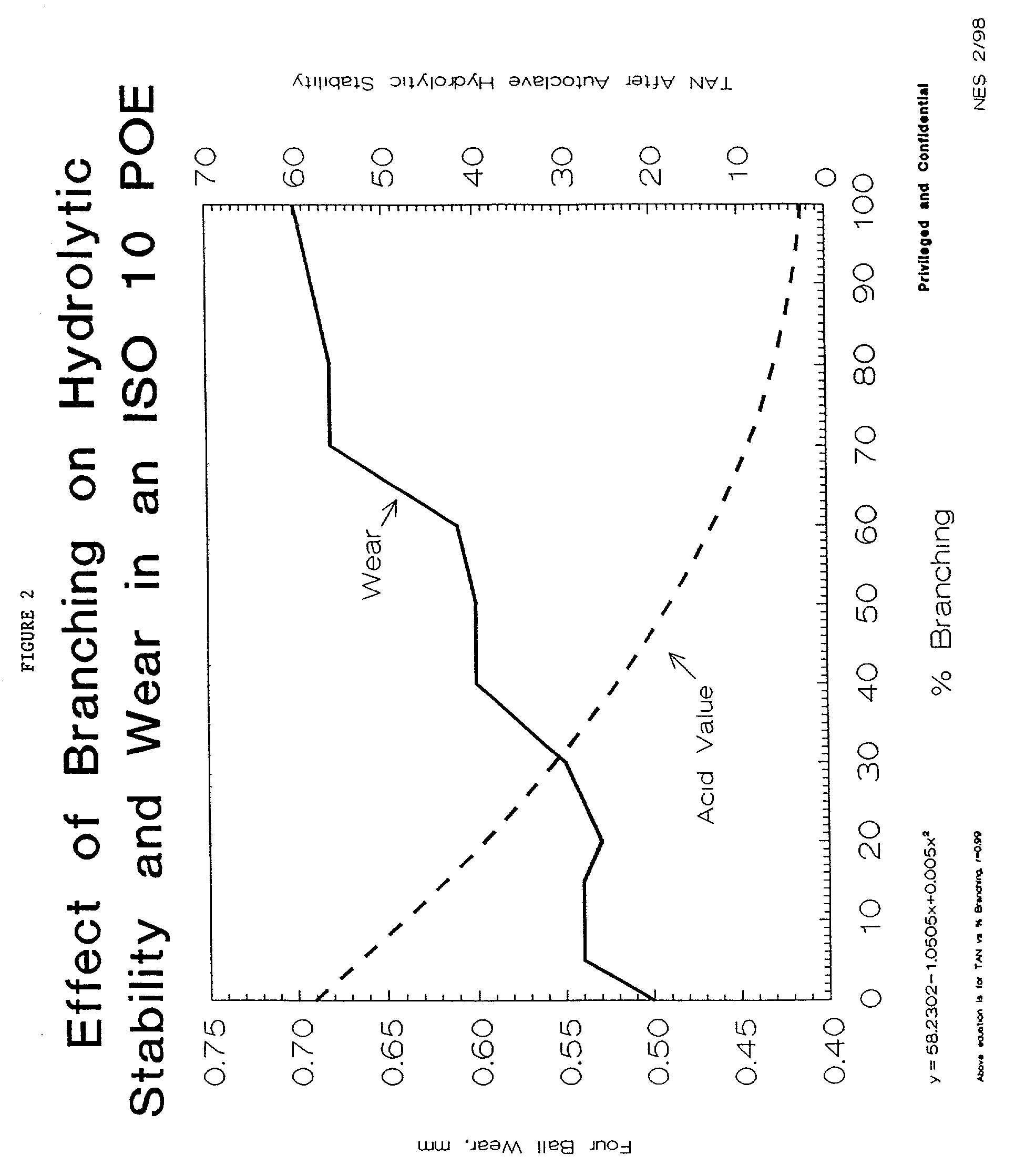Method of reducing wear of metal surfaces and maintaining a hydrolytically stable environment in refrigeration equipment during the operation of such equipment
a technology of metal surfaces and hydrolysis stable environment, which is applied in the direction of lubricant compositions, chemistry apparatuses and processes, base materials, etc., can solve the problems of metal particles that may clog the capillary tubing of the compressor, are unacceptable commercially, and the internal metal surface tends to become worn from operation,
- Summary
- Abstract
- Description
- Claims
- Application Information
AI Technical Summary
Benefits of technology
Problems solved by technology
Method used
Image
Examples
example 2
[0056] In Example 2, esters having a viscosity of ISO 10 were prepared, blended and tested for hydrolytic stability and metal wear. The ester identified as Ester C is a blend of 60% percent Ester A and 40% percent Ester E. Ester E is formed from a polyol mixture consisting of 85% pentaerythritol, 12% dipentaerythritol and 3% tripentaerythritol and a mixture of straight chain acids consisting of 0.4 weight percent nC.sub.4, 50.82 weight percent nC.sub.5, 9.96 weight percent nC.sub.6, 13.40 weight percent nC.sub.7, 14.84 weight percent nC.sub.8, 5.43 weight percent nC.sub.9, and 5.17 weight percent nC.sub.10. The ester identified as Ester D is a blend of Ester B and Ester F. Ester F is formed from a polyol mixture consisting of 98 weight percent pentaerythritol and 2 weight percent dipentaerythritol, and 2-ethylhexanoic acid. Examples 12 and 19-22 are not embodiments of this invention and are included as a basis of comparison. Examples 13 through 18 represent multi-component ester ble...
PUM
| Property | Measurement | Unit |
|---|---|---|
| temperature | aaaaa | aaaaa |
| weight percent | aaaaa | aaaaa |
| weight percent | aaaaa | aaaaa |
Abstract
Description
Claims
Application Information
 Login to View More
Login to View More - R&D
- Intellectual Property
- Life Sciences
- Materials
- Tech Scout
- Unparalleled Data Quality
- Higher Quality Content
- 60% Fewer Hallucinations
Browse by: Latest US Patents, China's latest patents, Technical Efficacy Thesaurus, Application Domain, Technology Topic, Popular Technical Reports.
© 2025 PatSnap. All rights reserved.Legal|Privacy policy|Modern Slavery Act Transparency Statement|Sitemap|About US| Contact US: help@patsnap.com


